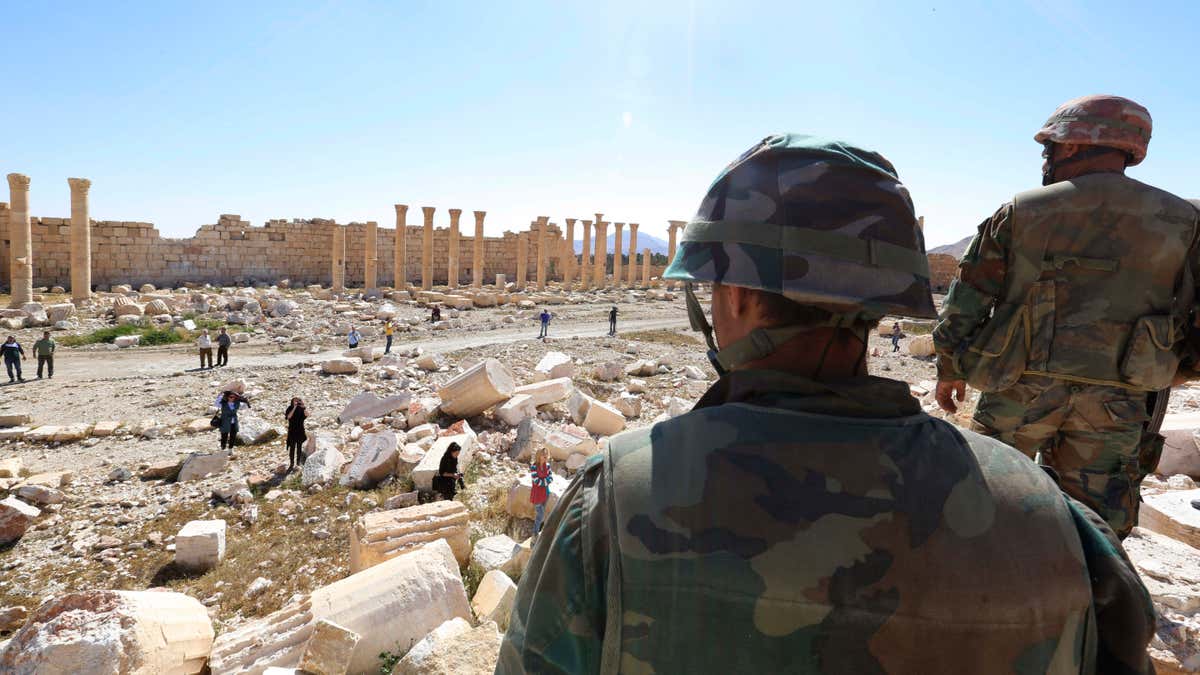
In this picture taken Friday, April 1, 2016, soldiers look over damage at the historical Bel Temple in the ancient city of Palmyra in the central city of Homs, Syria. (AP)
Syrian engineering teams and popular defense groups uncovered a mass grave in a neighborhood in the newly recaptured ancient city of Palmyra, Syria’s state-news agency reported Friday.
The remains of about 40 people, 23 of them women and children, were found in the graves. SANA news agency reported they were killed by Islamic State militants and said some of the bodies were beheaded and bore signs of torture.
Syrian army experts detonated hundreds of mines they say were planted by the Islamic State before they were forced out of Palmyra last Sunday, according to the Associated Press.
Reporters were able to tour the archaeological gem that had attracted tens of thousands of tourists every year before the Islamic State captured the city and destroyed most of its Christian artifacts. While, some parts of the site, including the Roman-era grand colonnades and amphitheater appeared relatively untouched, the damage every else was very much visible.
According to the Associated Press, the Arch of Triumph – which was under the Roman emperor Septimus Severus between A.D. 193 and A.D. 211, has been reduced to a pile of stones. The monumental arch once sat atop the famed colonnaded streets of the ancient town.
The Temple of Baalshamin and parts of the Temple of Bel, one of the best-preserved Roman-era sites, are also destroyed.
The town was completely deserted Friday, except for Syrian army soldiers working on dismantling explosives and visiting journalists. The town is completely deserted; its remaining residents had fled as the Syrian army’s offensive against ISIS began last month.
Traces of the fighting could be seen all around. Burned cars parked on the side of the road, electricity cables strewn about on the streets, and scattered empty water tanks apparently used as barricades.
At the entrance to the Roman amphitheater, where the Islamic State filmed children shooting captive Syrian soldiers in the head, black graffiti is sprayed on a stone wall.
"Lasting and Expanding," it read in Arabic, a logo of the Islamic State group. "The Islamic State" is scribbled on another nearby wall.
A Syrian officer told reporters that more than 3,000 mines have so far been dismantled. "They booby-trapped everything, trees, doors, animals," he said, speaking of the militants. Russian sappers have arrived in Syria to help the Syrian army clear mines in and around the town.
Palmyra is located about 155 miles east of Damascus, the Syrian capital. Government troops, backed by allied militiamen and Russian airstrikes retook the town on Sunday from ISIS extremists who had controlled Palmyra and its environs for 10 months.
The Associated Press contributed to this report.
